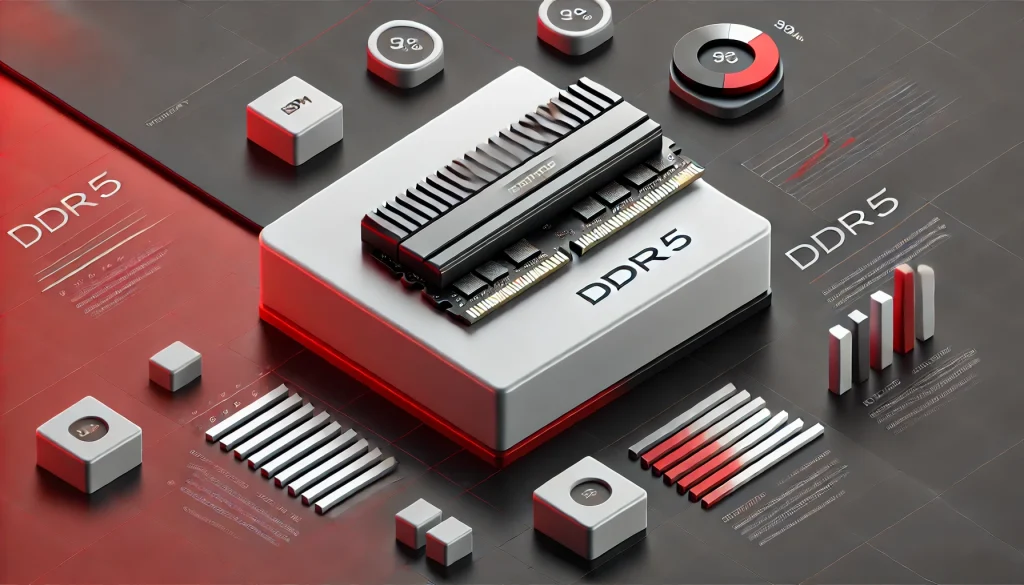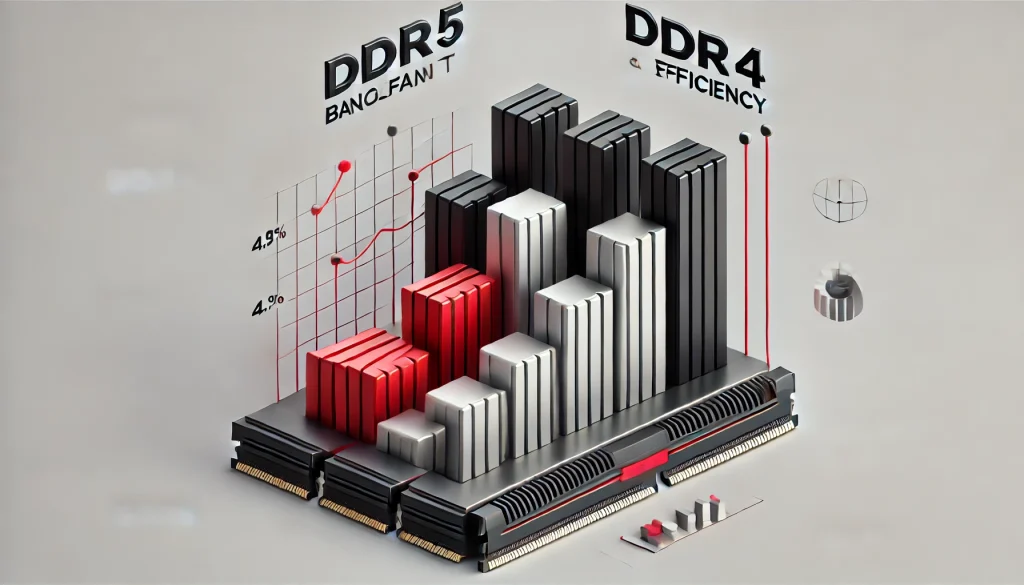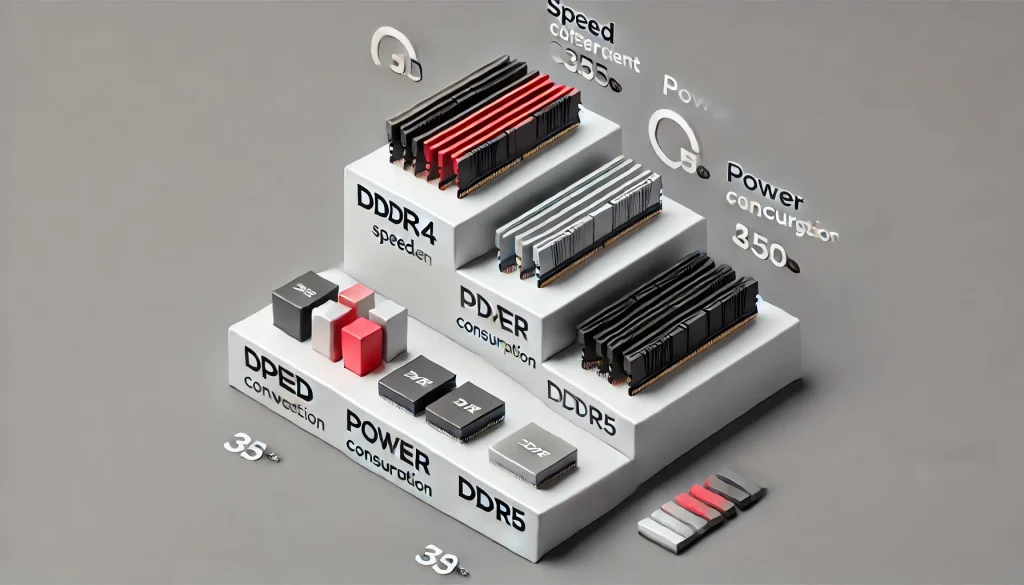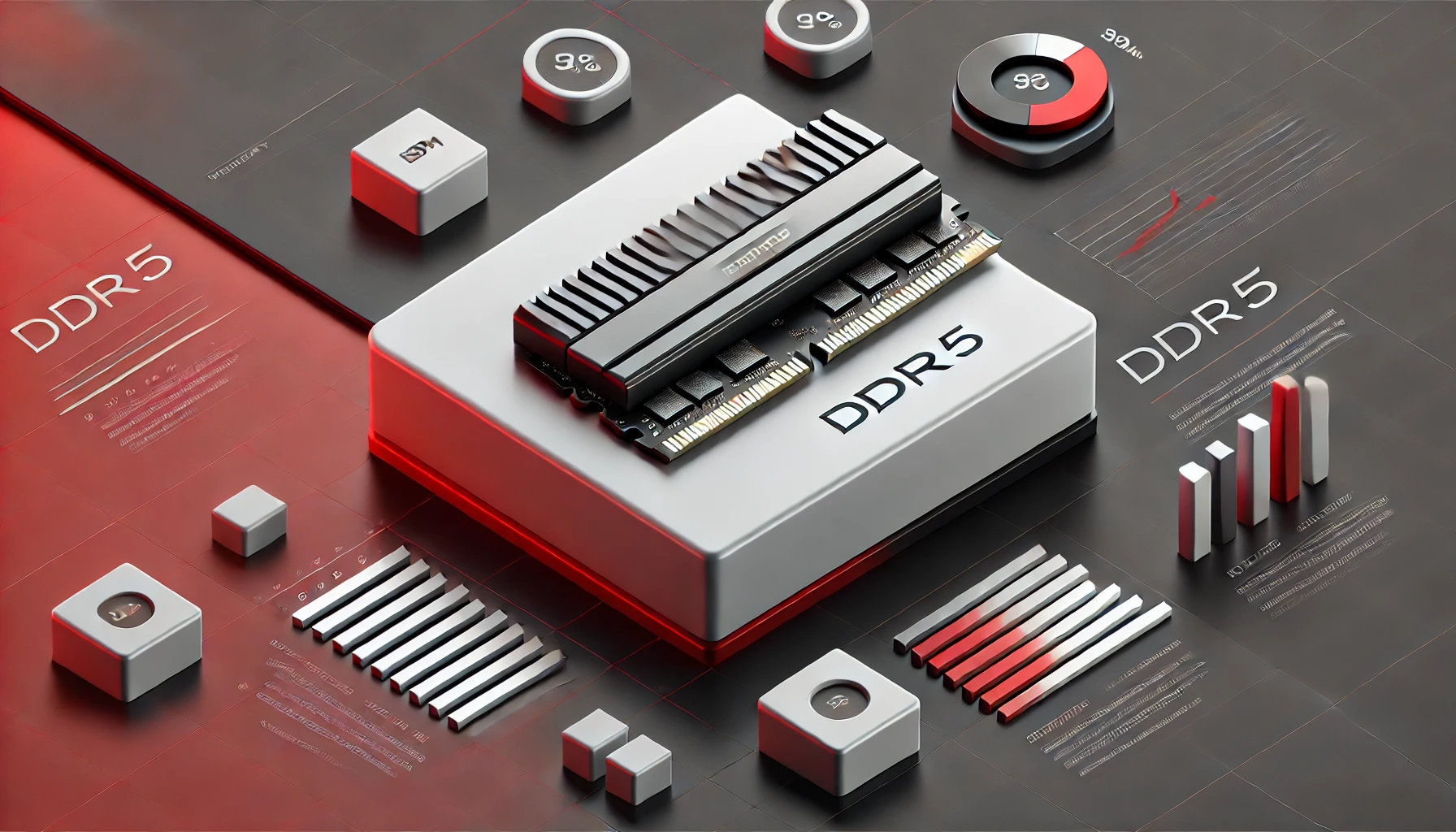
DDR5 RAM (Double Data Rate 5) represents the latest advancement in computer memory technology. As the successor to DDR4, DDR5 brings significant improvements in speed, capacity, and efficiency. It plays a crucial role in high-performance computing, especially for gamers and professionals who rely on memory-intensive tasks. This blog will explore how DDR5 enhances system performance and why it matters in modern computing.
What is DDR5?
DDR5 is the latest generation of dynamic random-access memory (DRAM) technology used in computers. It significantly enhances memory bandwidth, which means data can move faster between the system and memory, improving overall performance. Developed as the successor to DDR4, DDR5 offers a substantial increase in memory capacity, with support for up to 64 GB per module and beyond. DDR5 also improves power efficiency by operating at a lower voltage (1.1V), reducing energy consumption, which is particularly beneficial for laptops and energy-conscious systems. The most significant advantage of DDR5 is its ability to handle demanding applications, such as gaming, 3D rendering, and video editing, by providing faster data access and allowing multiple tasks to run smoothly without lag. This makes DDR5 essential for next-generation computing, offering better performance scaling for future hardware developments.
Key Features of DDR5 RAM

- Increased Bandwidth: DDR5 doubles the data transfer rate of DDR4, improving overall system speed.
- Higher Capacity: DDR5 supports up to 64 GB per module, ideal for high-end applications.
- Improved Power Efficiency: Operates at a lower voltage (1.1V vs. 1.2V in DDR4), reducing power consumption.
- Enhanced Performance Scaling: Offers better performance for workloads requiring high memory throughput.
- ECC (Error Correction Code) Memory: Built-in ECC support improves reliability by detecting and correcting errors.
How DDR5 Differs from DDR4

| Feature | DDR4 | DDR5 |
|---|---|---|
| Bandwidth | Up to 3.2 Gbps | Up to 6.4 Gbps |
| Capacity | 16 GB per module max | 64 GB per module max |
| Power Consumption | 1.2V | 1.1V |
| ECC Support | Limited | Full ECC support |
Why DDR5 Matters for Gaming
For gamers, DDR5’s increased bandwidth and reduced latency mean smoother and faster performance in games that require rapid data processing. High-end games with large, open-world environments rely heavily on quick memory access to load textures, animations, and other game assets in real time. DDR5 allows for faster load times and more consistent frame rates, providing a significant edge, especially in competitive gaming. Moreover, DDR5’s ability to handle multiple tasks simultaneously means gamers can stream, play, and run background processes more efficiently without a noticeable drop in performance.
DDR5 for Professional Use
In professional environments, DDR5 is a game-changer for industries that rely on large datasets and high computational power. Video editors, 3D modelers, and researchers handling data-intensive applications like simulations or AI training models benefit from DDR5’s improved capacity and speed. The ability to handle larger memory modules means that professionals can work with more complex files without bottlenecking system performance. For example, a video editor working with 4K or 8K footage will experience smoother editing timelines and faster rendering times, significantly boosting productivity.
Common Myths About DDR5
- DDR5 is only for gaming: While DDR5 offers significant benefits for gaming, it’s not exclusive to gaming. Its increased bandwidth and capacity are ideal for professional tasks like video editing, AI workloads, and data analysis.
- It is not backward compatible with DDR4 motherboards: This is true, but often misunderstood. DDR5 requires new motherboards that specifically support DDR5 memory. However, this is a necessary step due to the hardware changes needed for DDR5’s higher performance.
- DDR5 doesn’t offer significant improvements over DDR4: Some users believe DDR5 only marginally improves performance, but it doubles bandwidth and significantly boosts multitasking and data processing, especially for memory-heavy applications.
Future of DDR5
DDR5 is just beginning to make its mark, but its future looks promising. As the technology evolves, DDR5 will likely become the standard in both consumer and professional computing. Its ability to support higher memory capacities and increased data transfer speeds means that future hardware will be able to handle more demanding applications. This technology will drive innovations in gaming, artificial intelligence, and machine learning, setting the stage for faster and more powerful computing systems.
Pros and Cons of DDR5 RAM
| Pros | Cons |
|---|---|
| Higher speeds and bandwidth | More expensive than DDR4 |
| Increased memory capacity per module | Limited availability initially |
| Lower power consumption | Requires newer motherboards |
DDR5 RAM Compatibility: What You Need to Know
Upgrading to DDR5 requires compatible hardware, particularly motherboards that support the DDR5 standard. DDR5 is not backward compatible with DDR4 motherboards, meaning you will need to upgrade both the memory and motherboard if you are transitioning from DDR4. While upgrading to DDR5 offers significant performance benefits, users should weigh the cost of the upgrade against their current system’s capabilities to determine if the investment is worth it now or later.
Fun Facts About DDR5 RAM
- First launched in 2020: DDR5 debuted in 2020, setting the new standard for memory technology in high-performance computing.
- Can reach up to 128 GB in future modules: Although current modules max out at 64 GB, DDR5 is designed to support even larger memory capacities, with future modules expected to reach 128 GB or more.
- Supports both dual-channel and quad-channel configurations: DDR5 can operate in quad-channel configurations, significantly boosting data transfer rates.
- Lower voltage improves energy efficiency: DDR5’s 1.1V operation reduces power consumption, contributing to longer battery life in laptops and energy-efficient desktops.
Conclusion
DDR5 memory represents the future of high-performance computing. While still in its early stages of adoption, its benefits for gaming, professional use, and general computing are clear. With its increased speeds, improved efficiency, and higher memory capacities, DDR5 is set to become the new standard in memory technology. Whether you’re a gamer, a professional, or just someone looking to boost system performance, DDR5 is worth considering as part of your next upgrade.
Resources
- Crucial. Everything You Need to Know About DDR5 RAM
- PCMag. What is DDR5? Everything You Need to Know About the Latest PC Memory Standard
- Digital Trends. DDR5 Memory Explained
- Kingston. DDR5 Overview
- Tom’s Hardware. What We Know About DDR5 RAM

Brijesh Gohil is the founder of Tech Brij, A popular Tech Blog which is focused on Tech tips & Buying Guides. You can follow him on Facebook, Twitter, Google + & LinkedIn.

